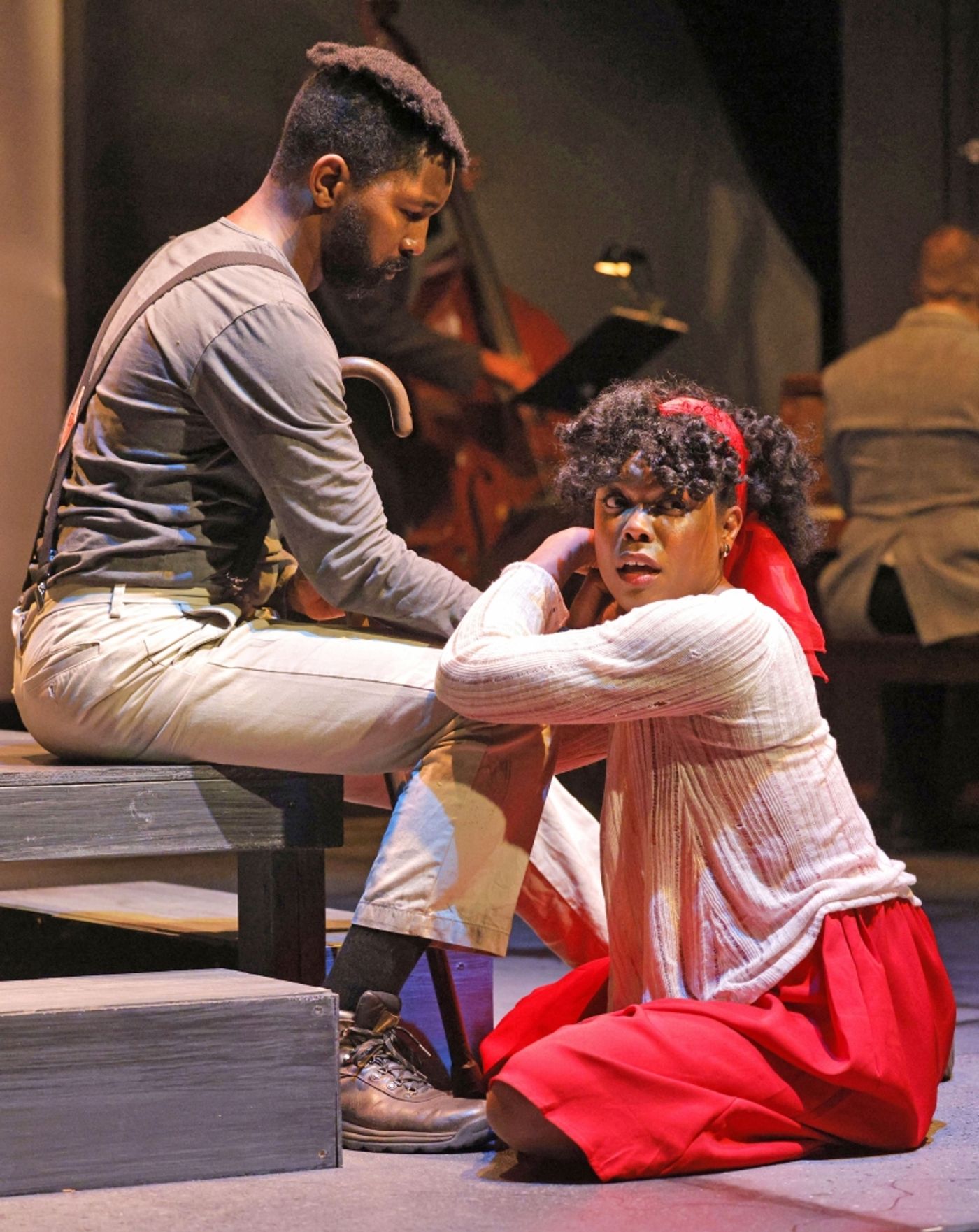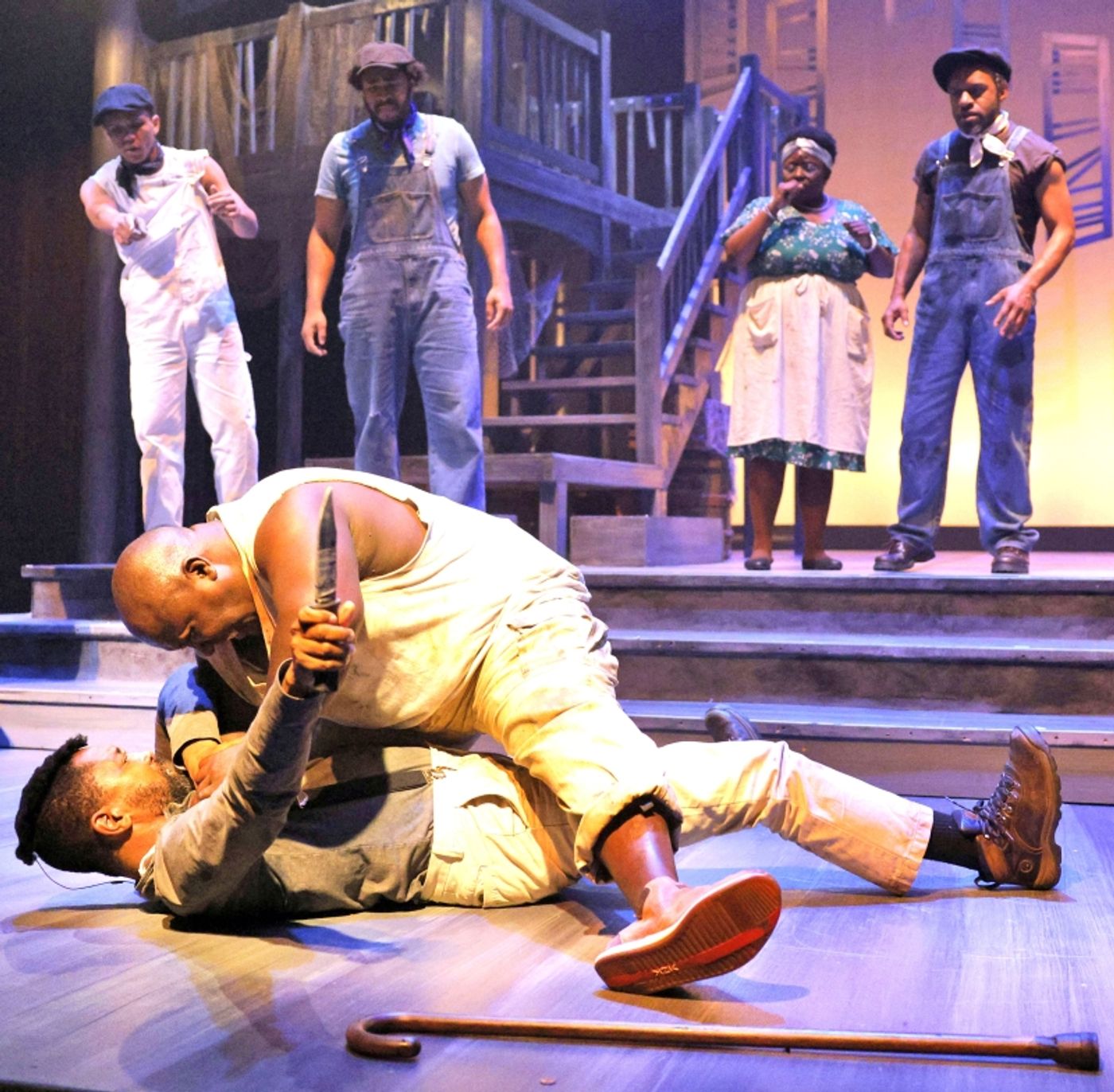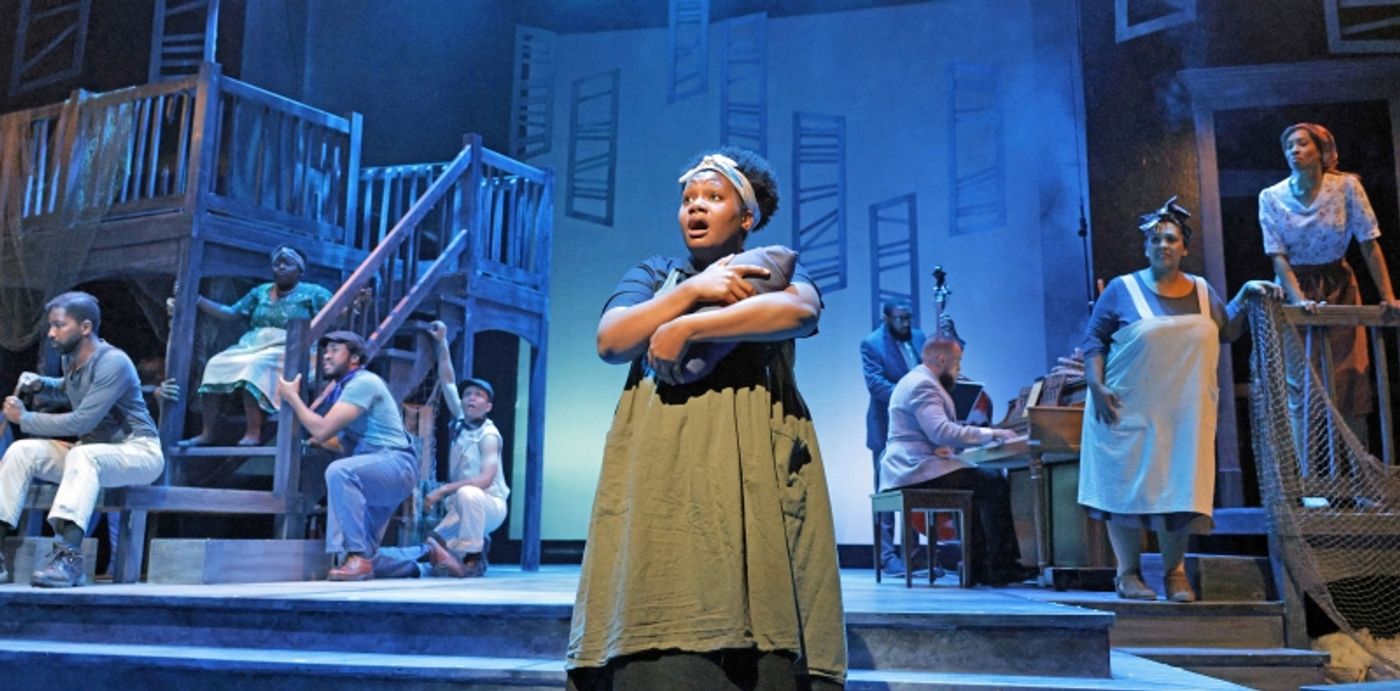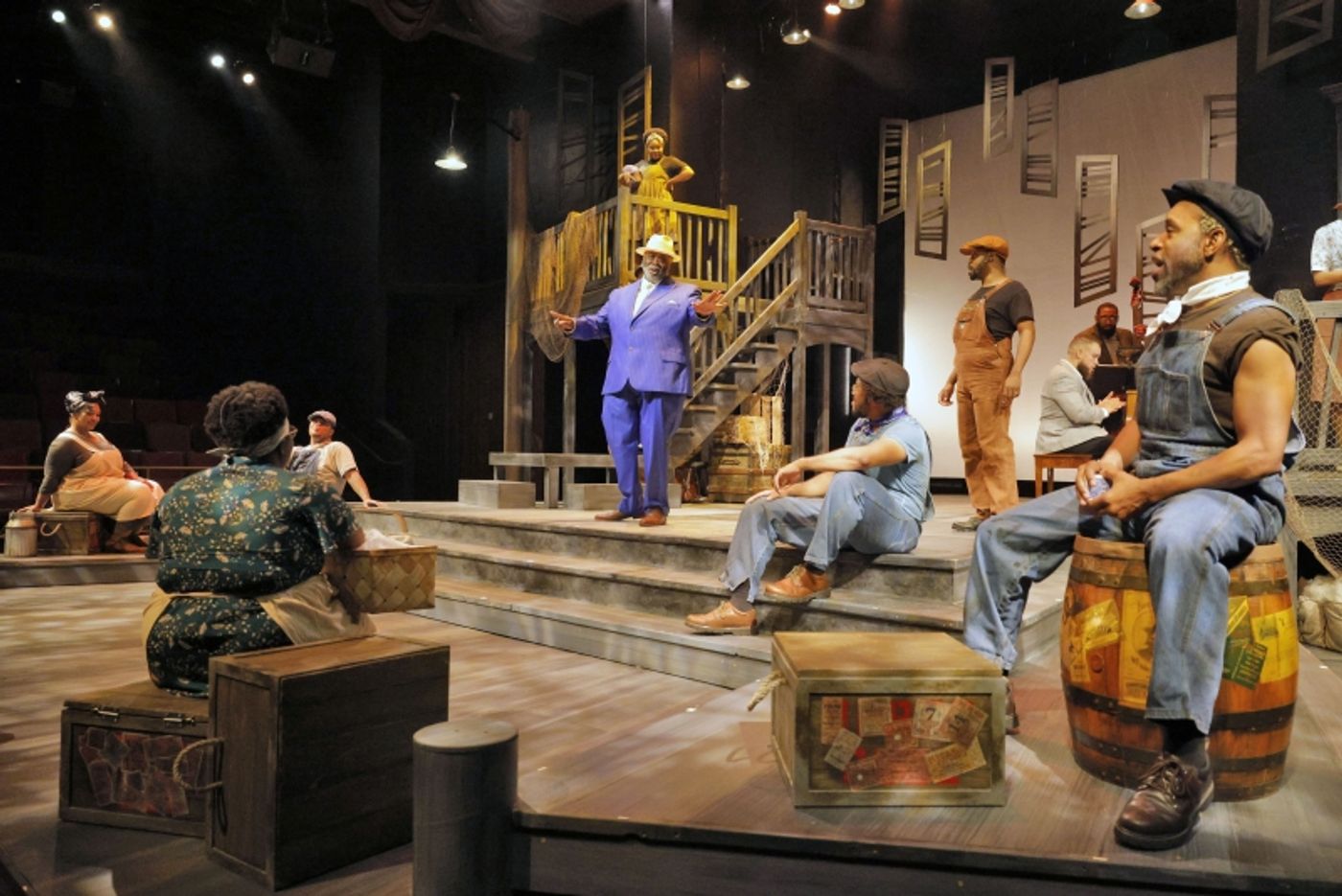Review: PORGY AND BESS at Music Theater Heritage
Grand Production of American Classic

Now playing in the Grand Theater at Crown Center is Music Theater Heritage’s production of Gershwin’s “PORGY AND BESS.” This is an example of MTH going “all in” on a very challenging show and producing an extremely credible final product.
PORGY AND BESS is one of those shows that deserves a little explanation. It has been unintentionally mired in controversy ever since it opened in 1935. George Gershwin called it “a folk opera.” The original version of PORGY AND BESS (based on an earlier 1925 novel) was a four-hour opus magnum written and performed as Grand Opera. The original version featured dialog “sung through” as recitative.

as Porgy and Bess
From the outset, the original project may have been a case of something designed with good intentions that spun on itself and bit its creators.
There have been several iterations of PORGY AND BESS. This MTH version opened on Broadway in 2012 and was trimmed in run time to a more accessible two and a quarter hours. It starred Norm Lewis as Porgy and Audra MacDonald as Bess. Not only had the length been trimmed, the cast is half the size of the original. The show earned several Tonys.
The new libretto is by Suzan-Lori Parks and Diedre Murray. The original opera was written by three white men. This has been a point of controversy in the Black community ever since. The tasks assigned to Parks and Murray (both of African American ancestry) included updates to the point of view and the pruning of some now objectionable language. It remains performed as Grand Opera.
Enough with the background. Music Theater Heritage has made a determined effort to put forth an exceptional production. MTH has built on a cast from an excellent 2019 production of RAGTIME. From that production comes Kiarri Andrews as Porgy and Allison Jones as Bess. Both are outstanding, classically trained vocalists.

penultimate Fight Scene.
Sporting Life is played by Douglass Walker. His performance is its own animal. Sporting Life is the neighborhood smuggler, pimp, and drug dealer. His function is to tempt Bess to leave Catfish Row and Porgy for a new life in the big city. His voice, while very good, is closer to what we ordinarily hear in musical theater.
Bess ultimately succumbs to Sporting Life’s temptations and life continues on Catfish Row with everyone a little sadder. It speaks to the desperation of this place.
The other named character is the villain/victim/bully bass-baritone Crown played by Robert McNichols, Jr. His huge Bass Baritone fills the 320 seat auditorium with sound, I was especially taken with his staged fight sequences.
The remaining supporting cast of ten, although named in the program, are hard to identify. They are all excellent classical singers and fill their roles admirably. Many have their own solos and songs in which they can shine individually.
Director Rodney Lloyd Scott is a renowned director, imported for this purpose from Los Angeles where he is a college professor. His scheme for the show is achieved as envisioned. The orchestra of five or sometimes six led by Desmand Mason is excellent considering that PORGY AND BESS was written for a full symphony. Marc Wayne is choreographer assisted by Emily Shackelford who also serves as intimacy coordinator for the piece. Latoya Rozof is the costume designer.

Scenic Designer Jack Magaw from DePaul University was similarly imported as demonstration of the seriousness with which MTH took this production. His design is well executed in the Grand Theater.
Overall, Music Theater Heritage has achieved its overall design for PORGY AND BESS. I have not seen the-four hour version of PORGY AND BESS, but purists have branded this version PORGY Lite. Stephen Sondheim, in particular, was vocal in his opposition to tampering with the classic version.
One goal of the Gershwin and Heyward estates in authorizing this 2012 adaption was to quiet some of the criticism that claimed cultural appropriation by including an African-American adaptor. By cutting back on the size and cost of the project, the estates hoped to encourage more frequent production of this more musical theater-like adaption.

George Gershwin, a first generation, Jewish, genius composer, grew up in music through Tin-Pan Alley and became classically European trained as a composer before attempting PORGY AND BESS. Along the way, Gershwin acquired a fondness for Jazz. PORGY was an attempt to create something new “a folk opera,” in much the same way Sir Andrew Lloyd Webber created “rock operas” a half century later.
The original novel “PORGY” appeared in 1925 penned by a man named DuBose Heyward. Mr. Heyward grew from a true old South family. While Heyward did not imbue his novel with conscious bias, it does suggest a lens tinted by the same point of view now seen as objectionable in Margaret Mitchell’s “Gone With The Wind” at about the same time. In other words, you write what you know.
Shortly after original publication, Gershwin reached out to Heyward with a proposal to turn the novel into an opera. Their collaboration along with George Gershwin’s brother Ira would take some ten years to reach a stage.
The result was a musical masterpiece. Many of the show’s songs found their way into the American musical songbook and not necessarily as Grand Opera. They include “Summertime,” “Leaving for the Promised Land,” “I Got Plenty Of Nothing,” “Bess, You Is My Woman Now,” “It Ain’t Necessarily So,” and “There’s A Boat That Leaving Soon” among others.
The late 1920s and early 1930s were a very different time. Some audiences were segregated. When PORGY AND BESS was first presented in Washington DC, the actors refused to perform until the theater was desegregated. The theater owner finally caved to the cast’s demands.
The Gershwins and Heyward were not entirely blind to probable societal pushback. One concession made early on and continuing to today is that all the actors (save one) in authorized productions must be African- Americans.
PORGY AND BESS has become part of the musical theater canon because of various musical pieces that have transcended the full show. It has been rarely performed in full because of its level of difficulty and its various cultural difficulties.
This 2012 version may lack some of the grandeur of the original, however a good production of a cut-down version may be your only opportunity to see something so powerful. PORGY AND BESS continues at the MTH Grand Theater through June 23. Tickets are available online at www.musictheaterheritage.com or by telephone at 816-221-6987.
Photos by Cory Weaver.
Reader Reviews
Videos

